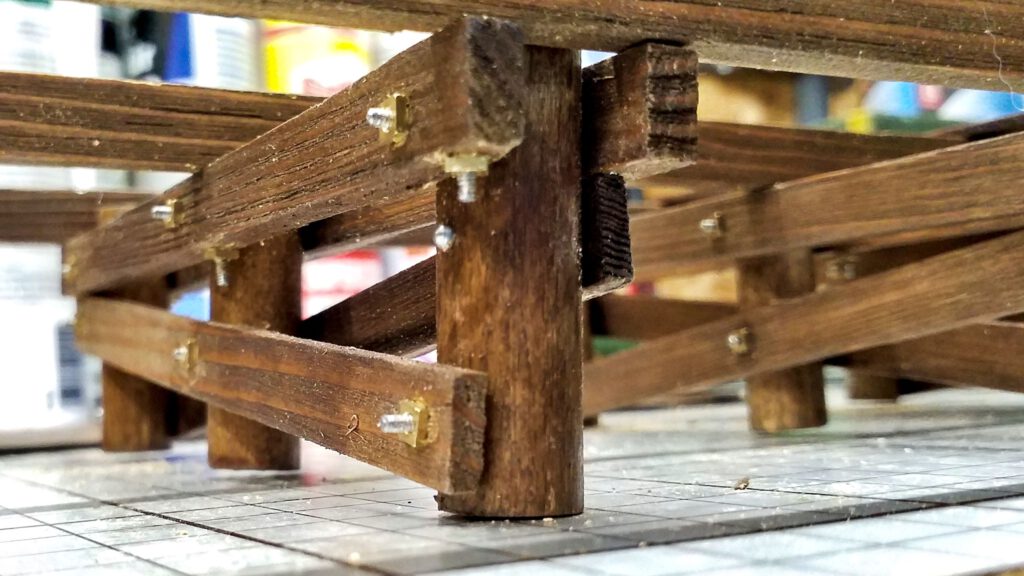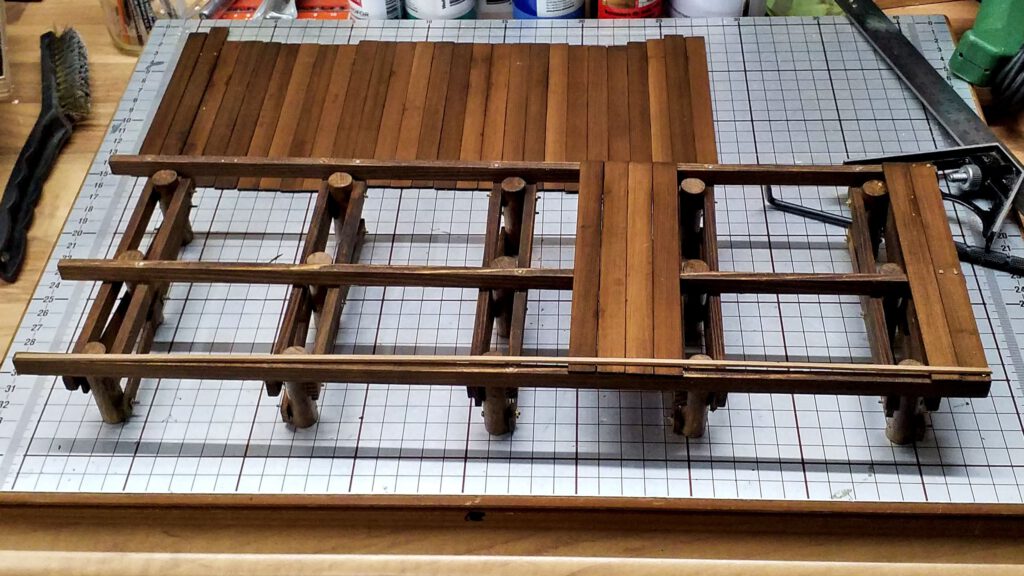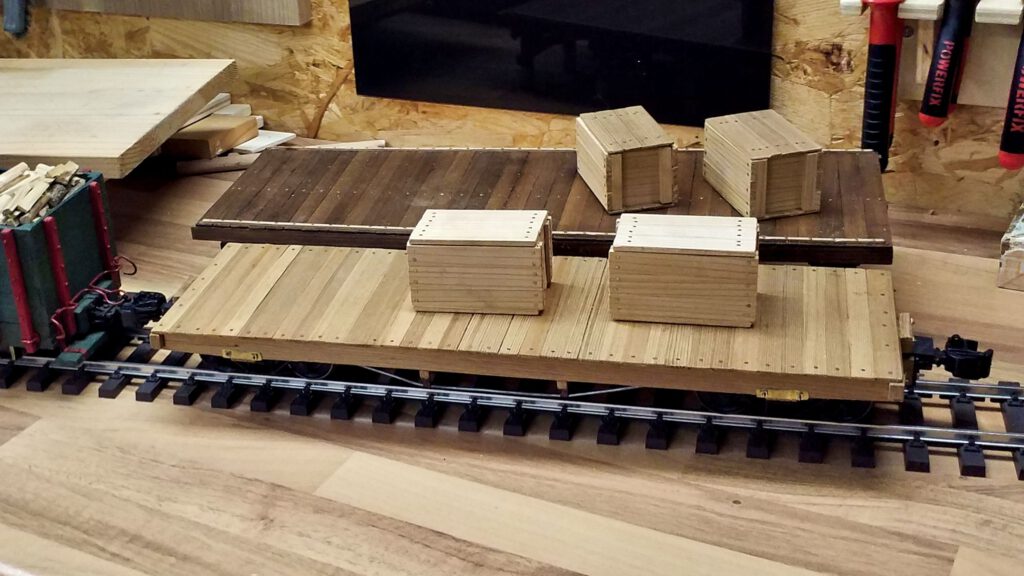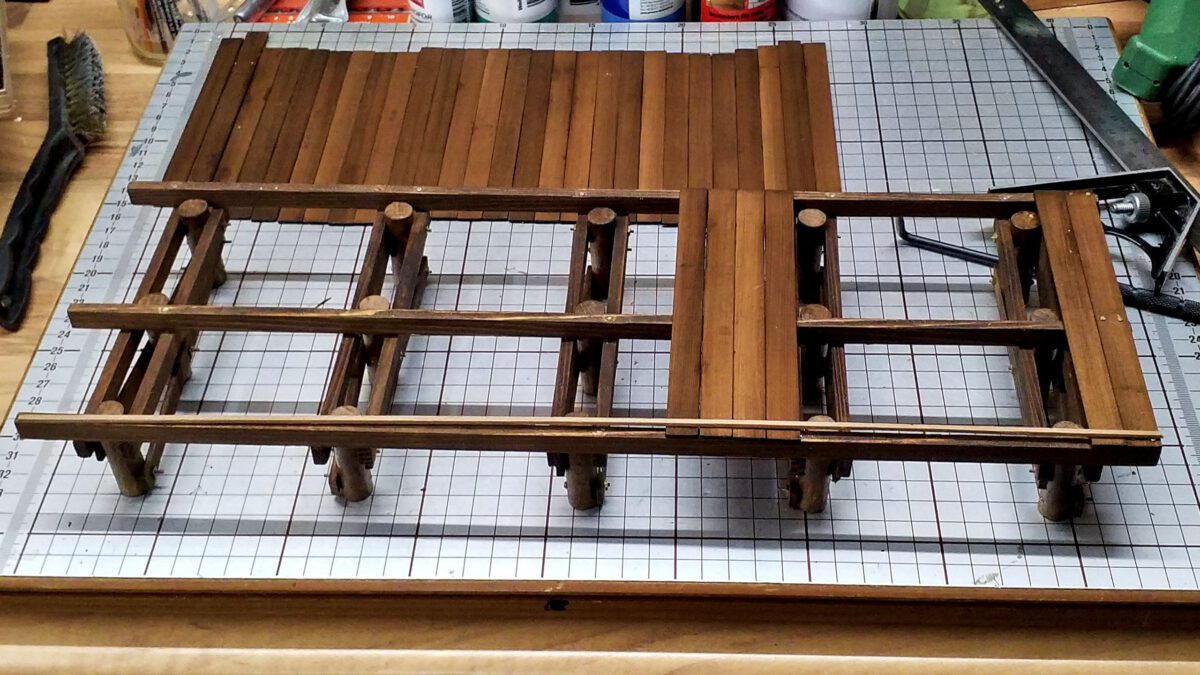Since the operation session draws closer I’m focused on having a working interim result rather than completing all steps perfectly. So the ramp is now being put into working order. First off, the individually constructed bents have to get connected. After that, it’s planking time.
The longitudinal beams are ripped from red cedar once again and rest on the bents’ cross beams. Each bent is fastened with a rivet-headed threaded rod to the longitudinal beams. Of course one has to pay attention to keep everything at right angles.

As soon as the frame is done, the decking boards, which were cut and stained beforehand, can be nailed into place. I’ve already explained how to create those in my report on building the flatcar, so I won’t go into detail here, again.
The only difference is that I omit grooving the boards. In this particular case, I couldn’t imagine a good reason to expend such an effort to a functional building like the loading ramp. It also saved me quite a time-consuming step in getting the deck ready for operations.

Quasi as compensation I’ve added warning boards to the long sides which give the workers some tactile hint that they are near the platform’s edge. The decking boards at the platform’s ends are directly nailed on the longitudinal beams, but for all other boards, the nails keep the warning boards in place, too.
In order to have some load to move during the operation session, some slats are ripped and cut and a total of four freight crates is constructed. Those little beauties even have a removable lid. (…and meanwhile they’ve been lettered, too)

Thus, once again I’ve accomplished my goal to bring some new material to the next operation session. Next time, the ramp will be completed and detailed.

